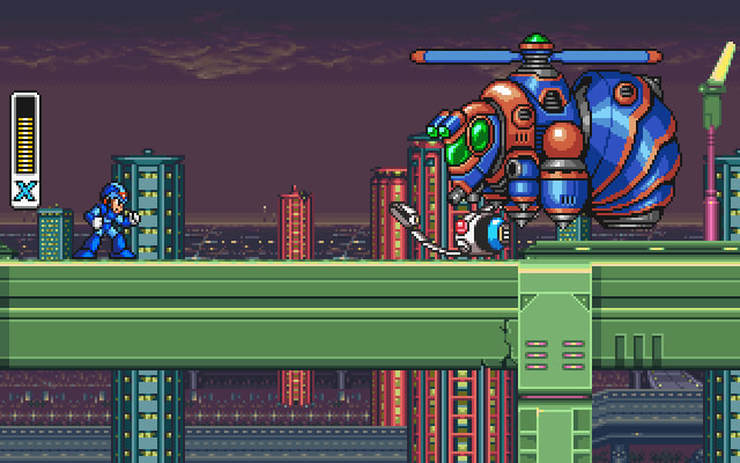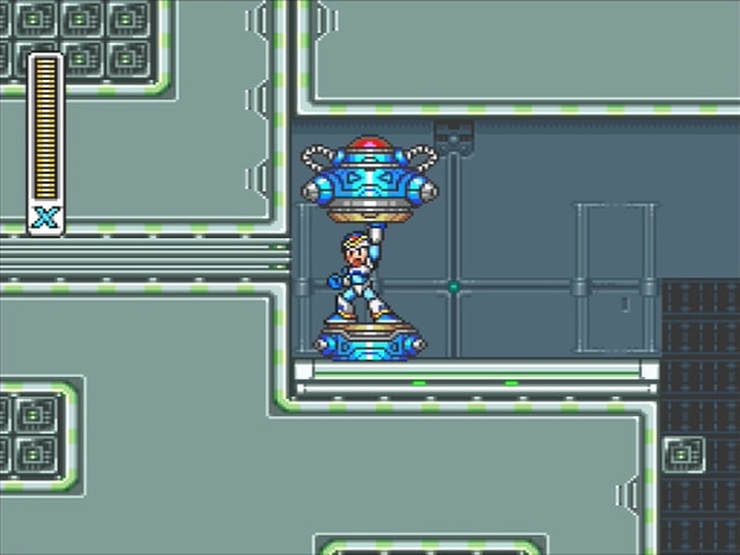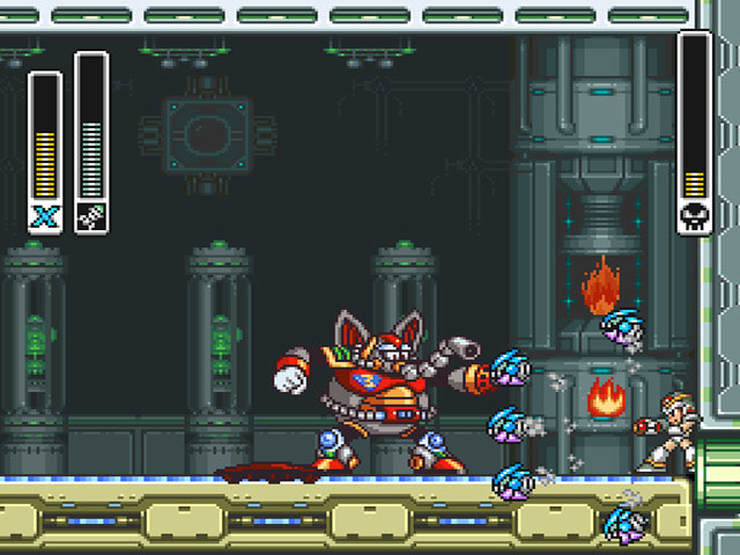|
Player(s): 1 Platforms: SNES, Wii, Wii U, N3DS, Android, iOS, SNES Classic Games have come a long way since the launch of Mega Man X in 1993. Despite this, side scrolling action/platform games have held a place in our gaming ecosystem, always evolving and always offering something enticing for players. Mega Man X arguably started this evolution. With the release of the SNES Classic, I’ve decided to take a step back and look at Mega Man X. Mega Man X was designed to be the next generation of Mega Man, in more ways than one. It was designed to be an evolution of the core concepts that made up the original Mega Man series, while also taking place narratively a generation or so after the classic series. In the future, long after Dr. Light has passed away, a scientist discovers Mega Man X in a capsule in some ruins. His design is used as a base point for re-launching robots into society, for the betterment of society. Naturally, events transpire that cause many robots to go ‘Maverick’, and it’s Mega Man X’s job to hunt them down. The story within the game is kept to a minimum, with just enough narrative to establish the environment and give the player a goal to move towards without being intrusive to the gameplay. I’ll tell you right now, the gameplay is where this game shines. Even to this day, the simple yet clever ways in which the game is designed help assure that it remains timeless. The game does very little to guide you in the way that modern games do. There are no overbearing tutorials or guidance text. Rather, the entire introduction stage is the tutorial, relying on the player’s sense of problem solving to figure out how to play. Right from the beginning you are presented with situations that force you to experiment until you learn that you need to move right to progress, that you can jump, that you can shoot, that you can slide on walls and that you can charge up you X-Buster. Upon completing the introduction stage, you are given the choice of tackling any of the 8 Mavericks in any order you please. Each Maverick has a stage that revolves around a theme, making each stage and Maverick fight unique. As with the classic Mega Man games, each boss has a specific weakness, which you can discover through logic and experimentation to help make the battle easier. None of the bosses are so hard that you can’t get through the fights with just the X-Buster if you are careful, which adds a level of freedom to how the player can approach them. A cool feature I always loved, which isn’t something you see in this type of game too often even now, is the concept of consequences. We’ll use Chill Penguin and Flame Mammoth as examples. Normally, Flame Mammoth’s stage has a lot of fire everywhere because it is a factory. Since the idea behind Chill Penguin is weather control, defeating him will change the weather in Flame Mammoths stage, with snow everywhere and some new paths becoming accessible. It’s this type of care and attention to detail that makes the game feel dynamic and deep despite being rather simple at the core. As you defeat each Maverick, you acquire a version of their power, allowing for different options for battles. On top of that, hidden around the levels are items for permanently increasing health, items for storing reserve energy and suit upgrades that grant new abilities (such as halving incoming damage). All of this gives the game plenty to do and plenty of ways to approach how you want to finish. The original game didn’t have a save feature, but instead would give you a password representing your progress. Any version beyond the original SNES version will have implemented some sort of way of saving, so this isn’t really a factor anymore, though it does give you the opportunity to jump into the game at any point if you can find the appropriate password. Another nice feature that many games of that time didn’t offer is the option to remap your buttons as you please. This seems minor, but for precision-based games like this, giving the player control over how they control the character is welcome. In relation to the experience on the SNES Classic specifically, I can say that it plays exactly as I remember it as a kid. The game looks crisp, everything is responsive and frame by frame it feels the same. I’ve played the game on every platform except mobile phones and can say that it plays well on all of them. Mega Man X represents an important evolution of action-platformers in gaming history, and surprisingly still holds up really well. This is thanks to catchy music, a timeless art style and gameplay systems that rely on the ingenuity and skill of the player rather than the game itself. At this point, I can 100% the game in about 1 hour, though if it’s your first time it could take you 2-4 hours depending on how good your exploration skills are. This is a game I will always recommend to gamers. - Teepu Graphics: A+ Gameplay: A+ Sound: A+ Value: A- OVERALL: A+ Pros: + Dynamic stages change according to your progress. + Clever level design teaches players how to play without forcing tutorials. + The aesthetics are masterfully created, making it one of the most enjoyable 16-bit games to play. Cons: - Short. - There can be occasional slowdown when a lot is happening on screen. - Original version has no traditional save function.
0 Comments
Leave a Reply. |
Search
Contributors◆ Angie
◆ Emily ◆ J.D. ◆ Janette ◆ JT ◆ Manuel ◆ Nestor ◆ Rose ◆ Sylvia ◆ Teepu ◆ Tiffany ◆ Winfield Archives
April 2025
|
© 2014-2025 A-to-J Connections. All Rights Reserved.







 RSS Feed
RSS Feed